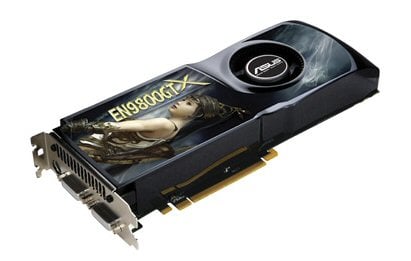ASUS EN9800GTX TOP Graphics Card
A lot has happened over the past month in the world of 3D gaming graphics: NVIDIA launched the GeForce GTX 280 and GTX 260, ATI introduced us to the Radeon HD 4870 and HD 4850, and NVIDIA tried to rain on the Radeon HD 4800 Series parade by dropping the 55nm GeForce 9800 GTX+. If that weren't enough, we've already seen price drops on the GTX 280 and GTX 260 as well. The latest fight for your pixel pushing dollars is shaping up to be quite a battle, and it's just getting started.

Although the latest and greatest graphics cards are always a hot topic, we're going to focus on one of the established predecessors - a GeForce 9800 GTX (without the plus sign) in this piece. Our sample comes from ASUS in the form of the EN9800GTX TOP. If you are a regular reader of HotHardware (or video card reviews in general), then you are probably already aware that "TOP" is ASUS's designation to indicate that the card comes factory overclocked. "TOP" stands for "Top Overclocking Performance." In this case, the EN9800GTX TOP is overclocked to 755 MHz for the core (reference speed is 675 MHz), 1175 MHz for the memory (reference speed is 1100 MHz), and 1840 MHz for the shader clock (reference speed is 1688 MHz). One interesting note is that this card is actually faster than the upcoming GeForce 9800 GTX+ that we mentioned above, but the EN9800GTX TOP is of course not a 55nm part like the 9800 GTX+. In the table below, you can see how the EN9800GTX TOP compares to NVIDIA's reference GeForce 9800 GTX and reference GeForce 8800 GTX.
|
GeForce 9800 GTX
• reference •
|
GeForce 8800 GTX
• reference •
|
The EN9800GTX TOP comes in the typical large ASUS box with a handle on top. Considering ASUS is trying to be more "green" by reducing the energy use of its motherboards, we'd love to see the compay take another green step and reduce the size of its video card packages. We have to admit, though, that we'd like to see ASUS use smaller boxes for another reason: so they take up less space in the lab as well.
In addition to the card, ASUS includes a setup guide, a CD/DVD wallet, driver CD, utility CD, one DVI-to-VGA adapter, one PCI Express Y-power adapter, and an component video adapter. The included custom ASUS software features the following unique utilities:








